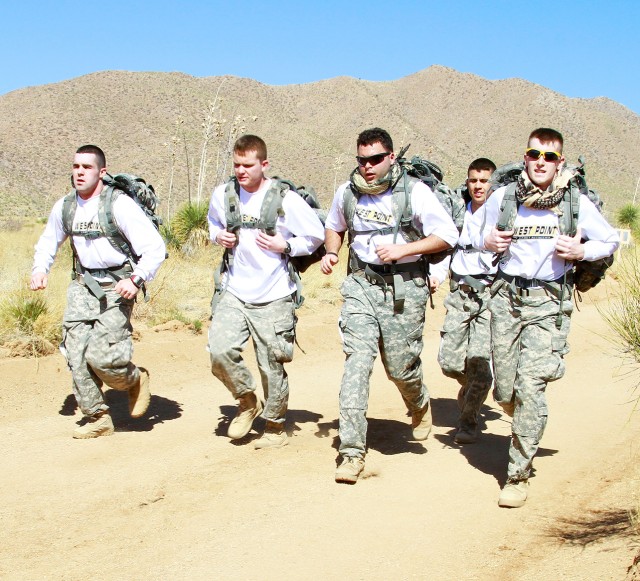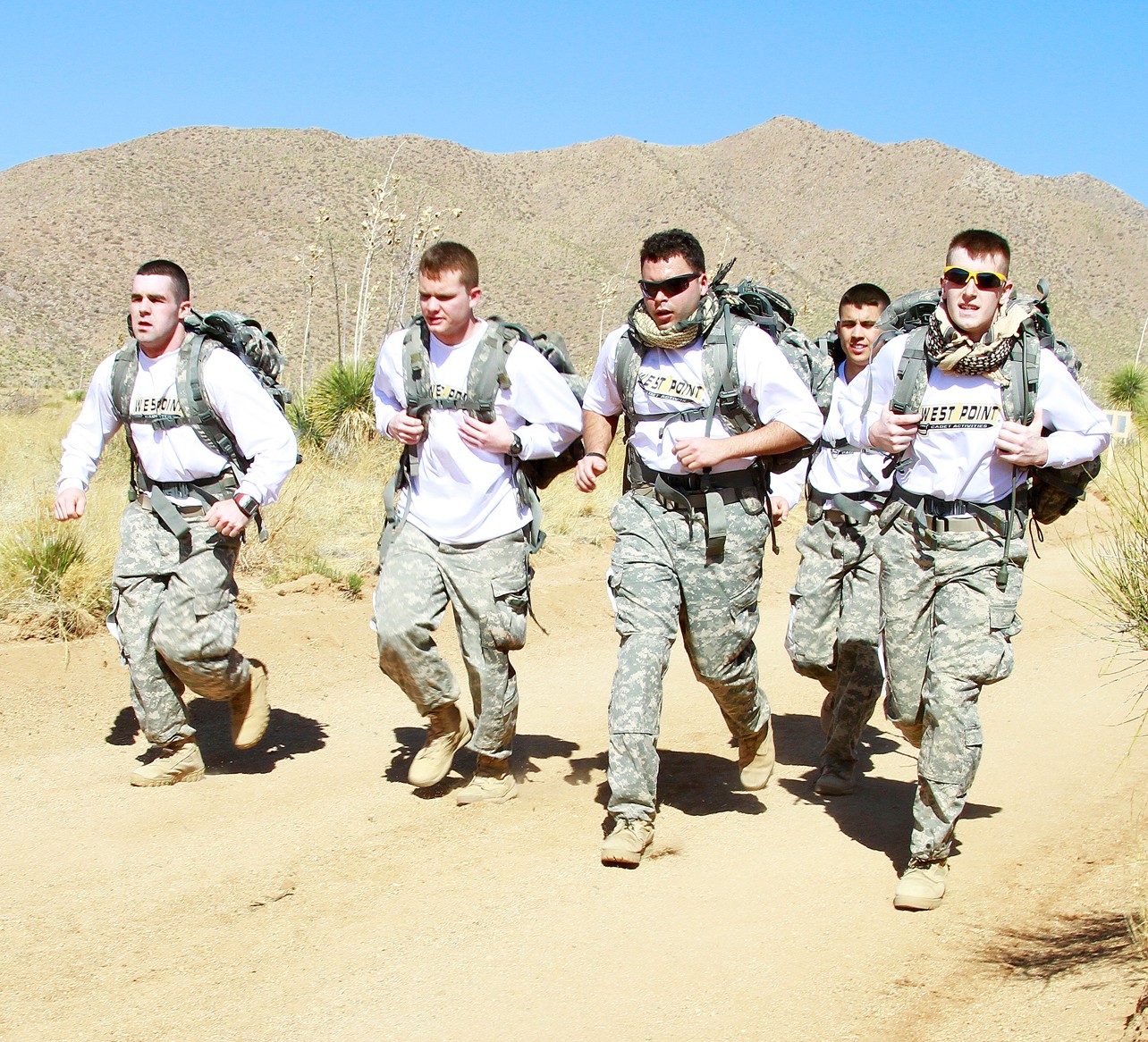
WEST POINT, N.Y. (March 31, 2011) -- The light had not begun to break over the mountain range that surrounds White Sands Missile Range, N.M., as thousands of people representing all 50 states and 12 countries made their way into the staging area March 27 for the 22nd annual Bataan Memorial Death March.
Among the more than 6,300 runners who came to support the survivors and those whom lost their lives during those horrific three years were four teams from West Point, three men\'s teams and one women's team.
Heeding the words of West Point Superintendent Lt. Gen. David H. Huntoon Jr., had shared with the team a few days earlier, the cadets set out to represent the academy as ambassadors and to learn from the 15 survivors in attendance.
"(The Superintendent) came out to one of our practices last week and said the reason why we are there is to see and meet the Bataan Death March survivors and to learn from their experiences," Class of 2011 Cadet Kyle Cobb said. "Knowing what these survivors went through, we can do anything."
The sounds of bagpipes rang through the air as the survivors greeted racers ready to take on the course, which "Runner's World" magazine dubbed in 2009 as the most challenging marathon in America.
"I am so tickled that so many people came here and are interested with what we went through," Harold A. Bergower, a Bataan Death March survivor, said. "What people have to understand is that the atrocities the Japanese put us through in the POW camps were awful-when I die and (if I) go to hell, it will be a luxury compared to what I went through."
The racers began pushing their way through the flat lands of the course, battling constant wind gusts of 30 mph and more, which sent sand flying through the air at a blinding speed.
The course terrain also presented a challenge for runners, as it continuously changed from hardtop and gravel to deep sand. Yet, the bigger challenge was the altitude, with portions of the course reaching well over 4,000 feet above sea level.
"The course really challenged us all. We were all really hurting at different points," Class of 2011 Cadet Jake Chaput said.
With 35-pound ruck sacks on their backs, the cadets pushed through the trails. The three men's teams were all within striking distance of each other. Meanwhile, the women's team consistently pushed through adversity on the course.
By the midpoint in the race, other teams competing in the Military Heavy Division and ROTC Heavy Division began to slow down or fall out. At every check point, there was a survivor and hoards of volunteers cheering the racers on.
"Having the survivors and other veterans there throughout the course and at the finish line was extremely humbling," Chaput said.
As they made their final descent down the trails, the teams had one more major obstacle-a large, soft sandpit.
"The course was extremely hard, but what we went through today was only a taste of what they went through in the camps," Cobb said. "The pictures of those guys completely emaciated carrying their friends so they did not get shot was completely amazing."
When the teams made the final push down the blacktop to the finish line, crowds lined both sides to cheer them on. The West Point Men's A Team pushed through the pack to take third in the Men's Military Heavy Division, only 10 minutes behind the Special Warfare Command Team and five minutes behind the Rangers All-Stars.
Just as impressive was the West Point Men's B Team that finished fourth in the same division. The third men's team, led by Class of 2011 Cadet Kyle Volle, took first place in the ROTC Military Heavy Division.
While the women's team time wasn't as fast, they made a strong finish.
There are two categories, for both civilian and military divisions, known as "light" and "heavy." In the light category, runners may wear standard distance-running apparel. Marchers in the heavy division must carry a minimum of 35 pounds in rucksacks or backpacks; military entrants in the heavy category must wear their Army Combat Uniform or other service equivalent uniform.
For details about the Bataan Death March, race history and results, visit www.bataanmarch.com.

Social Sharing